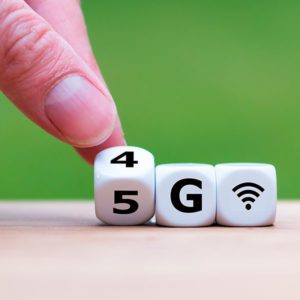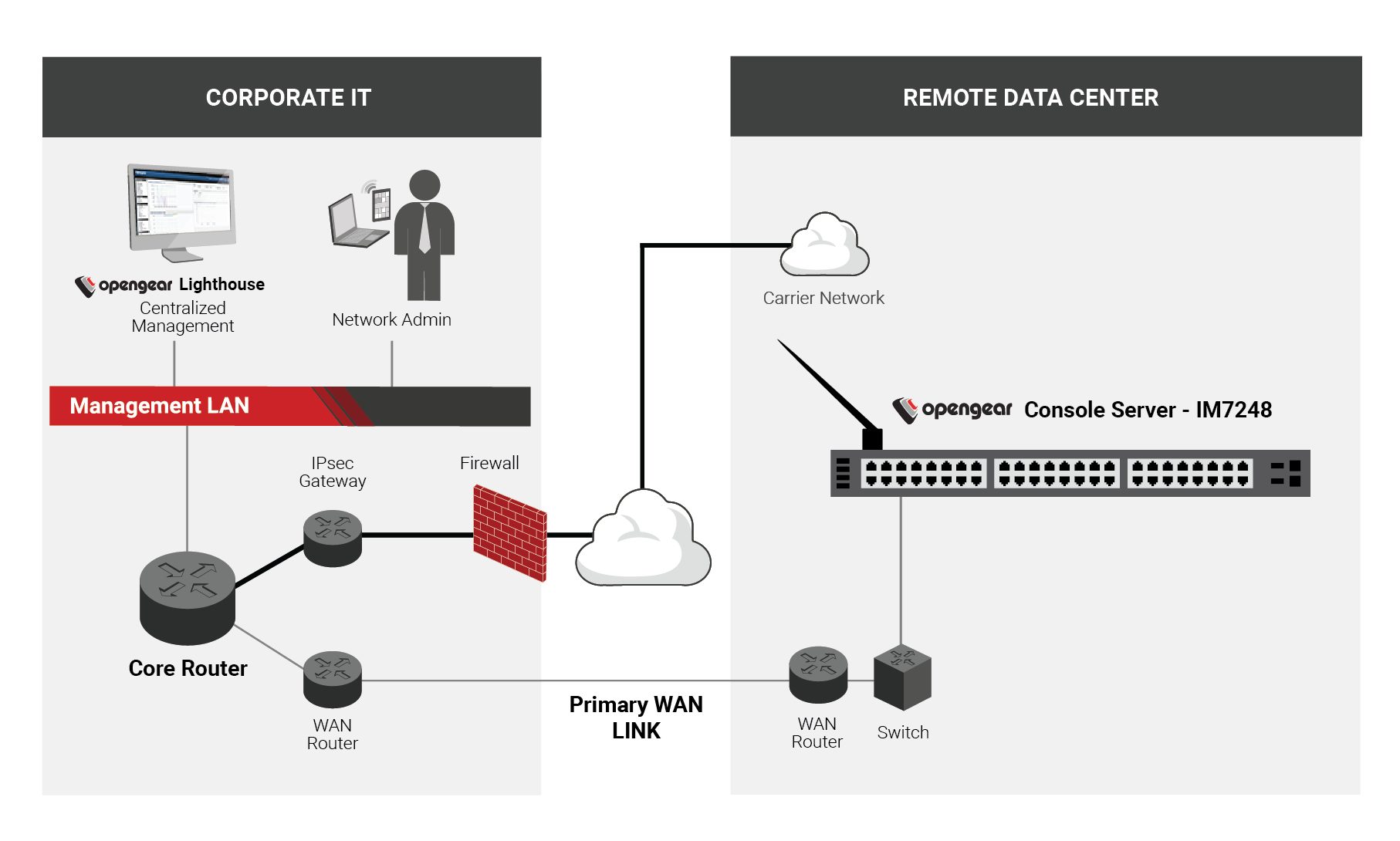 To learn how 5G will work with Opengear devices to make organizations resilient, I talked to Carrier Sales Manager, Todd Atherton.
To learn how 5G will work with Opengear devices to make organizations resilient, I talked to Carrier Sales Manager, Todd Atherton. To learn how 5G will work with Opengear devices to make organizations resilient, I talked to Carrier Sales Manager, Todd Atherton.
To learn how 5G will work with Opengear devices to make organizations resilient, I talked to Carrier Sales Manager, Todd Atherton.
Why would a customer want to use 5G?
5G will replace 4G technology. It’s more efficient, faster and has better signal strength. There is a need for something better than 4G because of how crowded that cellular band is getting – there are currently millions of devices operating on 4G, and more are being added every day. With this “overcrowding” there’s the need for something that is capable of handling all of those devices, that need is fulfilled by 5G.
What’s the difference between 5G and 4G?
Previous generations, like 3G, were a breakthrough in communications. 3G receives a signal from the nearest phone tower and is used for phone calls, messaging and data. When 4G was released it worked very similar to 3G, but with a faster internet connection and a lower latency – which is the time between when something is sent and received.
That said, 4G was supposed to be at least five times faster than the existing 3G services and theoretically, would provide download speeds of up to 100 Mbps. Fast forward to now and, like all the previous generations, 5G will be significantly faster than 4G. This should allow for higher productivity across all capable devices with a theoretical download speed of up to 10,000 Mbps.
To put it into perspective, it will be like the difference of riding your bike to work – 4G – versus taking a Bullet Train to work – 5G. OK, that might be a little over the top, but it does show that the difference will be very extreme, to say the least.
5G technology will utilize a higher-frequency band of the wireless spectrum called millimeter wave that allows data to be transferred much more rapidly than the lower-frequency band dedicated to 4G. The downside is that millimeter wave signals don’t travel as far: The new 5G networks will require many more – albeit smaller – antennas spaced closer together than previous wireless generations.
But on the plus side, the technology should be able to meet the vast needs for additional data transmission capability that are expected in the next several years. Gartner analysts estimate there will be nearly 21 billion internet-connected devices by the year 2020.1 More than three times as many as there were in 2016. That figure doesn’t just include phones, tablets, computers; devices such as home appliances, cars, dog collars, and many more are getting connected via the “Internet of Things”.
How will 5G effect Opengear devices in the future?
The main consequence of 5G is that it will enable/accelerate the migration of IT complexity to the edge of the infrastructure. More distribution of IT assets. If users want to maintain their current level of end-to-end reliability/availability, they will need to be able to extend it to the edge by implementing a Network Resilience layer. That means giving Network Engineers at the NOC the ability to reach devices at the edge, something enabled by Opengear solutions. As the levels of automation increase, users will need to also extend the reach of their management/monitoring tools. Opengear is preparing to be one step ahead of the market with its NetOps Automation System.
Today’s data centers are typically located in centralized locations. The farther away the data center is, the longer it takes to access that data. 5G networks help them quickly access information. So, no matter where these devices are located the need for visibility is even greater and can easily be accomplished with Opengear’s Smart Out-of-Band technology.
To learn more about using wireless 4G or 5G to ensure network connectivity, visit our Failover to Cellular page.
Businesses strive to be more agile to keep up with the competition and to meet ever-changing market demands. To keep up with the business, IT departments need to adapt to become leaner and more agile as well. On the networking side the drive for big data has put a strain on existing networks. The demand for larger data centers is increasing as well as a spread of these sites around the world.
Unfortunately, the deployment of data centers is still a slow and arduous process. In a traditional setup the networks were racked, powered and connected. After the hardware setup was complete, network administrators would come on site to deploy configurations into each individual device. This traditional model is still being used by many companies but a faster more agile way is available.
Day one is how we describe a brand new data center that has all the hardware physically installed but not configured and the network is not turned on or available. Coming on site is an option that could require network administrators to travel to remote areas for deployments. In colocation situations that additional time on site can be costly and limited as the company only rents the space.

An Opengear cellular out of band solution can give your network administrators the access as well as provide the connection necessary to access those devices on site. For example, a new site half way across the world can be prepared with all the necessary hardware setup by an outside vendor. Once the Opengear OOB management console is setup they can have full control of all the hardware at the site without ever setting foot on it.
Utilizing traditional OOB devices with POTS (modems) only allow a one to one connection. This severely limits the number of people working on deploying the network. In addition, with the slower data connections it also limits the ability to upload configurations or even upgrade firmware. Check out our new Cellular vs POTS calculator to find out how cellular has a better ROI.
One of the other benefits with utilizing Opengear for day one deployments is your network is completely setup for out of band management. The same critical devices connected via console are also the same ones that need management during failures. With our SmartOOB technology you can be sure your network will be resilient even if you are thousands of miles away.

On the eve of Retail’s BIG Show 2016, Opengear’s Todd Rychecky sat down for an interview discussing Opengear’s experience working with retailers of all sizes – and why achieving network resilience has become increasingly critical in the industry. Opengear’s Resilience Gateway product line continues to expand (including a new release to be announced at the BIG Show), and the company will be available to offer demos and discuss solutions with new and existing customers at Booth #831.
Network downtime is frustrating and very costly to millions of businesses all over the world. Recent network outages at the NYSE, United Airlines and the Wall Street Journal highlight opportunities where out-of-band systems might have helped mitigate the costs and frustrations of network downtime.
Opengear developed this infographic to help illustrate the issues involved and the potential risks that can be mitigated with a solid out-of-band management strategy: (more…)
As the markets for voice and data mature, carriers are looking to machine-to-machine communications (M2M) to become the new engine of growth. Through connectivity embedded in everyday objects such as lampposts, household appliances and even automobiles, M2M forms the backbone of the rapidly emerging Internet of Things, the blanket term for a worldwide network of IP-enabled devices communicating with each other.
Increasingly, 4G LTE is playing a key role in the rise of M2M, which isn’t surprising given its material advantages over 3G in terms of speed and spectrum utilization. LTE is already well-known as a fast data pipe, but its uses are diverse, covering (more…)
Back in February, Sprint officially certified the first of our console server products for use on their network, the ACM5004-GS. As we launched this amazingly powerful remote management device, Sprint wrote the following:
“Did you hear that just now? It was the sound of another cord being cut.
No longer does an enterprise have to maintain a specific wired connection to allow for remote access and troubleshooting of Sprint Managed Network Solutions managed routers. Opengear, an infrastructure management solutions company, has introduced a wireless modem that enables this remote management at a lower cost – and with easier setup – than a wired connection. (more…)
So one might ask, who’s the best?
This question seems to get asked a lot as people make many important purchases; a new TV, car, smartphone, or even a console server, wink-wink. Research is an important part of the purchasing cycle. So, if you have been considering the purchase of an out-of-band management (OOBM) solution for your networks, you’ve definitely come to the right place. Within this report, you will find we do all the legwork for you.
There are a few important factors that go into purchasing a top-notch OOBM solution. Wasting no time, here they are. (more…)
I know we say it all the time and it begins to sound cliché, but Opengear offers the most  secure remote access solution on the market today. Whether you are accessing the device over the LAN/WAN, a secondary management LAN or a cellular out-of-band management connection you can be assured that Opengear has the most hardened security features to defend against cyber crimes.
secure remote access solution on the market today. Whether you are accessing the device over the LAN/WAN, a secondary management LAN or a cellular out-of-band management connection you can be assured that Opengear has the most hardened security features to defend against cyber crimes.
Last week a customer of Opengear authorized me to share his experience with Opengear and how it could have blocked a similar cyber attack that Target experienced last year. (more…)
 The other day I was talking with a network engineer from a large hosting company in Denver, CO. He was looking for a cellular out-of-band management device to attach to a router, switch and firewall for a remote data center location. We discussed the ACM5004-GV-E, our Verizon version, as he wanted to try the product he has heard many of his peers say is “the best OOBM device on the market today.”
The other day I was talking with a network engineer from a large hosting company in Denver, CO. He was looking for a cellular out-of-band management device to attach to a router, switch and firewall for a remote data center location. We discussed the ACM5004-GV-E, our Verizon version, as he wanted to try the product he has heard many of his peers say is “the best OOBM device on the market today.”
After a discussion about the limitless hardware and software features the product offers, I asked him what he is using today for OOBM. His response actually stunned me. 6 months ago they ordered a 128k DSL line from their CLEC (a well known name) for $125/month as an OOBM circuit to these devices. It still had not been installed so he decided it was time to call Opengear. With data plans as low as $5/month and the ability to activate the ACM5004-GV-E within 24 hours of receiving it, he decided to cancel his DSL line order and buy a new Opengear cellular product. (more…)